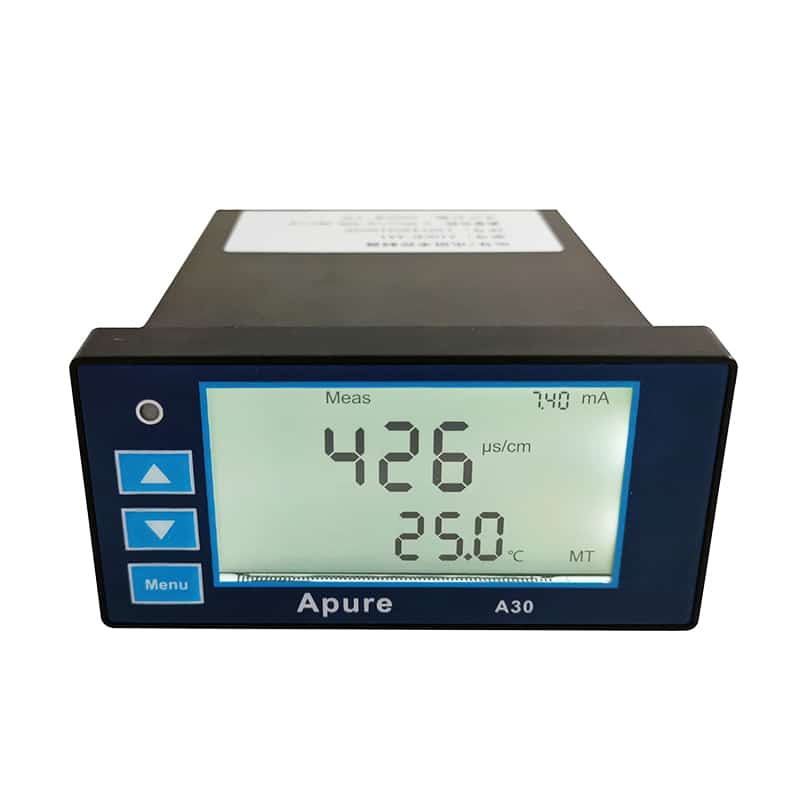What is electrical conductivity (EC)?
Under the SI (International System of Units), conductivity is referred to as “electrical conductivity” as an international standard term, but you will usually only see the more common term “electrical conductivity”. For the purposes of this article, we will refer to electrical conductivity as EC. EC measures the ability of a material to conduct electricity, which means the ability of a liquid to carry an electric current through it. When looking at EC in water or liquids, we usually find that water in its natural state, such as rainwater, lakes, rivers, etc., has a low level of EC (pure water does not contain EC). When water is contaminated, polluted or impurities, we see changes in the EC of the water because dissolved substances increase the EC level. Therefore, EC can be a good indicator of water contamination. However, it is worth noting that impurities such as salt in seawater, for example, can lead to very high EC readings because the water contains large amounts of dissolved salt. This is because when salt dissolves, it separates into ions (charged atoms).
Conductivity is usually measured in micro Siemens (µS/cm) and readings are usually between 30 µS/cm and 2000 µS/cm. For example, seawater reads about 50,000 µS/cm. An interesting fact worth mentioning is that conductivity actually increases as the water warms, so EC is usually recorded at 25°C, with both temperature and EC recorded. another unit of measurement for EC is mS/cm or millisiemens per centimeter. 1 mS/cm = 1000 µS/cm, and you will often find measurements showing 1 mS/cm = 1000 µS/cm, and you will often find measurements showing mS/cm, indicating a high level of EC (i.e., 2000 µS/cm or higher).

What is TDS?
Total Dissolved Solids (TDS) is the amount of substances that have been dissolved in a liquid. These substances can include salts, minerals, metals, calcium and other compounds that can be organic and inorganic. Simply put, TDS is any substance present in water that is not pure water and is not a suspended solid. The most common method of determining TDS is to measure the specific conductivity to detect the presence of ions (EC) in the water. Once the EC is determined, a conversion factor (usually by the meter performing the measurement) is run to determine the TDS. the conversion factor will vary depending on the sample you are testing, and is typically in the range of 0.4 – 1.0. However, this method only estimates TDS levels. For a true TDS measurement, you will need to take the sample back to the lab and perform an evaporation and weighing procedure. Part of the reason conversion from EC is not completely accurate is because some dissolved solids may not add to the EC reading and will not be picked up in the measurement and therefore will not be converted to TDS. It is worth noting that although TDS meters only provide estimates, they are quite accurate and you will usually find that a TDS meter will work for most applications. It is worth checking the level of accuracy required to determine the best measurement method for your individual needs. It is worth noting that although TDS meters only provide estimates, they are quite accurate and you will usually find that TDS meters will work for most applications. It is worth checking the level of accuracy required to determine the best measurement method for your individual needs. It is worth noting that although TDS meters only provide estimates, they are quite accurate and you will usually find that TDS meters will work for most applications. It is worth checking the level of accuracy required to determine the best measurement for your individual needs.
TDS is usually measured in parts per million (ppm), but can also be measured in mg/L. Generally, good quality water will be between 0 and 600 ppm, while readings above 1200 ppm are generally considered to be unsatisfactory levels of TDS.
What is the difference between conductivity(EC) and TDS?
While TDS can be determined from EC, the two do differ, which is why the conversion is only an estimate. EC is looking at the ability of the current to pass through the substances present in the water. TDS is looking at the dissolved solids in the water and looking at the particles that produce EC as well as the particles that are not conductive, which is the main difference. Therefore, the EC to TDS conversion factor will vary depending on the contents of the sample and these conversions are performed automatically by your TDS meter. It is important to get the right meter for your application. Even though it may make sense to choose the meter with the widest measurement range, this will reduce the accuracy of the measurement.
In most cases, EC will be measured and converted to TDS to obtain an approximate TDS reading. the TDS meter will automatically perform this conversion based on a conversion factor. The range of this factor depends on the sample being measured, so it is important to select the most appropriate meter for your application. However, most modern meters allow you to adjust the conversion factor to help you get the most accurate conversion when measuring EC.
Extended reading on electrical conductivity:
Water Quality Sensors For Water Treatments
What is pH sensor & How does it work?
What is salinity meter and how does it work?
Free chlorine vs total chlorine
